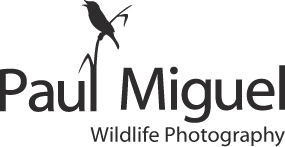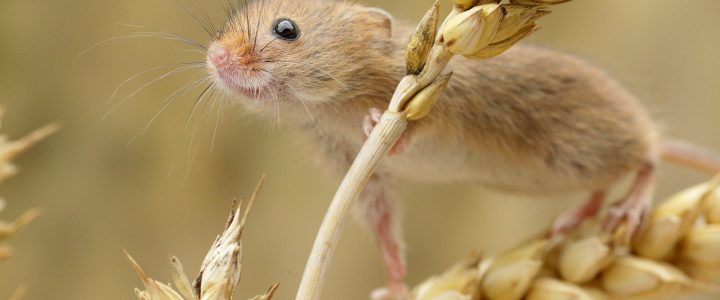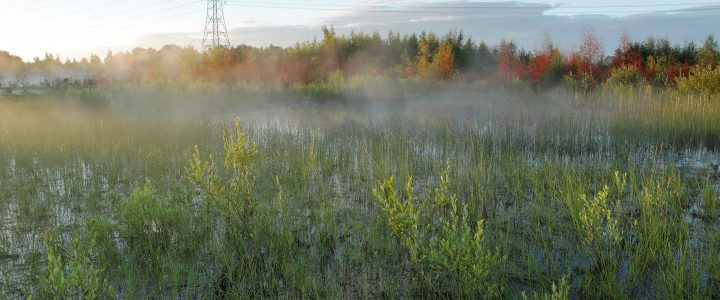Most of my wildlife photography is done in the wild but occasionally I’ll take advantage of some captive set-ups to add a new subject to my portfolio. Harvest mouse is a subject I’d wanted to photograph for a while so I took the opportunity to visit Alan Heeley, a wildlife photographer in Derbyshire. Alan keeps harvest mice and provides workshops for photographers who want to get high quality images of Britain’s smallest mammal.

I knew they were going to be tough but I was still surprised how fast they were! It really took about 15 minutes to get my eye in, by which time my images were starting to improve. We used a range of props, all natural looking, and an artificial background which worked well. The light was quite overcast but this made life easier, avoiding strong highlights and dark shadows. After a while we switched to a lighter background which I preferred and continued to vary the props – teasel, wheat stalks, flower heads and bramble were all used. Alan was really helpful in changing props and backgrounds – and giving tips on capturing the best images. He has a great sense of humour too so it’s always good fun.!


The harvest mice put on a great show, at times posing really well. Tripods are pretty useless here – due to the nature of these fast moving creatures you really need to shoot handheld so can move around and react quickly. I shot with a Canon 100mm macro lens which could fill the frame if necessary. The biggest difficulty was getting a high enough shutter speed with a good enough depth of field for sharpness. When getting in close, depth of field was tiny, even at my chosen aperture of f/9. I opted for an ISO of around 2000 to get good settings and with the lighter background noise was minimal on my Canon 1D Mark iv.
It was certainly a fun session – exhausting too as it takes a lot of concentration with such quick animals. If you want to photograph these adorable little animals email Alan: alan.heeley1@btinternet.com

The bramble was my favourite setting and this mouse was a right poser! Wonderful to spend a couple of hours with these tiny mammals. A big thanks to Alan Heeley – you can see more of his work at Alan Heeley Wildlife Photography





